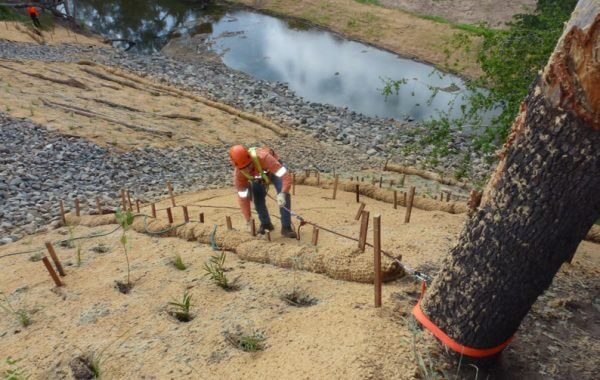Project: Santos GLNG Project
2014 – present
Ausecology has been engaged on numerous successful nestbox installation projects across Australia. One of our largest nestbox projects included the planning and installation of 597 nest boxes in vegetated areas along the 420 km GLNG Gas Transmission Pipeline to compensate for the removal of potential habitat for EVNT fauna species. The nest boxes were installed in Preferred Fauna Habitat Areas (PFHAs) as specified in the Land Rehabilitation/Reinstatement Management Plan, which were delineated on the basis of the Significant Species Management Plans and the habitat characteristics observed during preclearance ecological surveys.
Ausecology installed three types of bat boxes to provide roosting opportunities for the little pied bat (Chalinolobus picatus), south-eastern long-eared bat (Nyctophilus corbeni), large-eared pied bat (Chalinolobus dwyeri). Three types of glider boxes were installed in confirmed and anticipated glider habitat, including boxes for the greater glider (Petauroides volans), yellow bellied glider (Petaurus australis) and squirrel glider (Petaurus norfolcensis).
Ausecology used the highest safety standards to install nest boxes up to 10 m high. Ausecology staff are trained in an accredited working at heights course and use specialised climbing ladders with levellers, ropes, harnesses and pulley systems to safely install nest boxes at various heights. Where required Ausecology personnel are also trainined in the use of Elevated Work Platofrms to install nestboxes.
The nest boxes are included in Ausecology’s current Santos GLNG Rehabilitation Monitoring contract. Occupancy rates have been shown to be increasing with each monitoring round. Many of the boxes are occupied by target EVNT and significant fauna species such as greater glider, yellow bellied glider, little pied bat and glossy black cockatoo.







